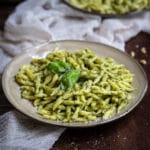
The best Homemade Basil Pesto made from scratch with basil leaves, garlic, olive oil, pine nuts, and Parmigiano cheese, pairs perfectly with this handmade pasta shape called Trofie. The pasta requires some time to make but the pesto is ready in just a few minutes! If you love homemade Italian food, you'll definitely love this traditional Trofie al Pesto.
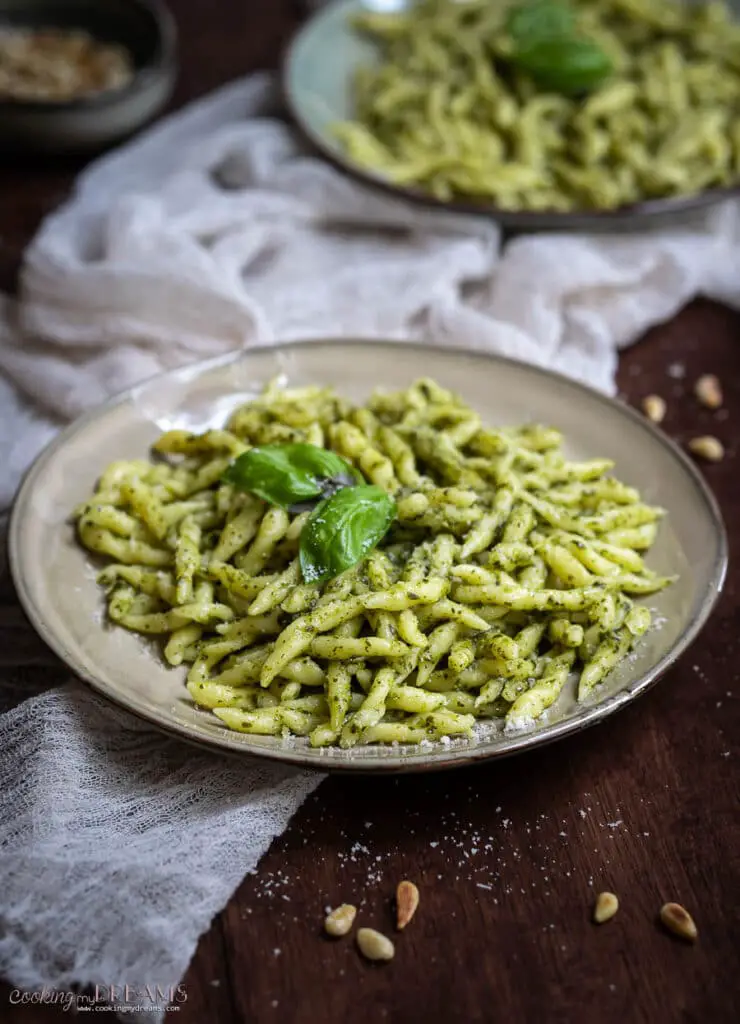
Growing up, one thing has always been a constant: my love for Pasta al Pesto. I still don't know why but I deeply and profoundly love the taste of Pesto together with Pasta, especially Trofie al Pesto.
You can really taste the difference between homemade and store-bought. But I'm not ashamed to say that some good brands make a good jarred Pesto too. Some quick recipes are perfect with jarred pesto, like with Pesto Caprese Pasta Salad, or this Pesto, Mushroom, and Zucchini Pasta Bake. But if you want to taste a really delicious creamy pesto, you should make this delicious homemade basil pesto from scratch. It's easier and faster than you think!
Jump to:
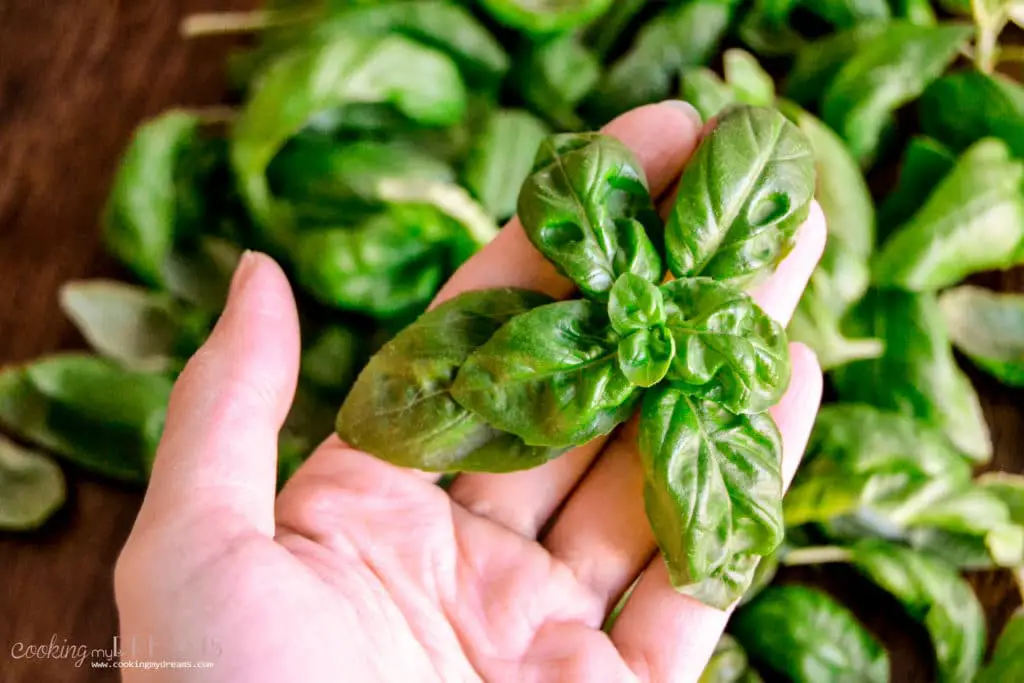
The Tradition of Basil Pesto
Pesto is not from Tuscany - where I come from - but from Liguria, our neighboring region. More precisely from the city of Genova where it gets its full name Pesto alla Genovese.
Unlike most regional food in Italy, Pesto Genovese is well known and appreciated throughout the whole Country. And, of course, worldwide (even though around the world is often misused, but I won't go into that argument).
Traditionally, Pesto is made with mortar and pestle (from which the name is derived). In our modern and frantic age, however, it is more commonly made with a food processor. The ingredients are always the same: Basil, Salt, Pine Nuts, Parmigiano, Olive oil, and Garlic. Only the latter is optional, for the people who hate garlic.
The traditional Pasta that goes perfectly with Pesto is Trofie. And another version of the classic Trofie al Pesto is with the addition of boiled potatoes and green beans.
How to make homemade Basil Pesto
Traditionally, Basil Pesto should be made in a stone or marble mortar with a pestle. You start by mashing the garlic, then adding the basil leaves until they're fully minced and released all their flavor. Then you add all the other ingredients and finally the extra virgin olive oil a little bit at a time until the right consistency is reached.
This full traditional process takes quite a long time and especially lots of muscle and effort but it's worth it if you want to be a purist.
Although, since it's the 21st century and we're surrounded by technology, why not use it? I find the food processor to make a fine job, making a good basil pesto in seconds. But you need to be careful not to over-process the pesto, or you'll get a funny flavor and consistency.
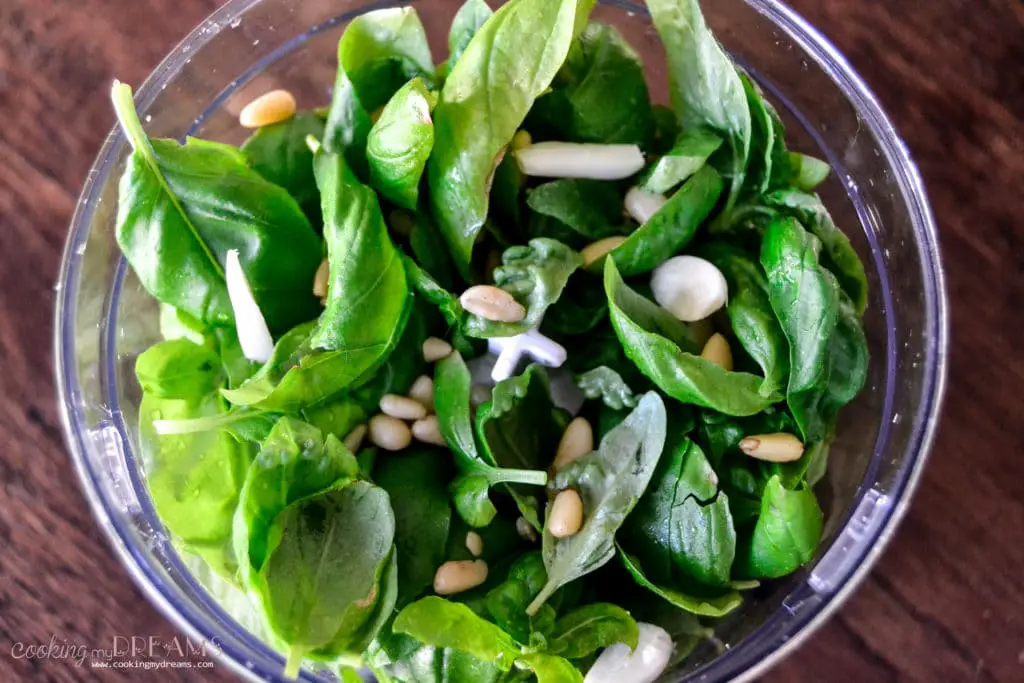

Making fresh basil pesto using a food processor, you simply add all the dry ingredients at the same time and pulse until finely minced. Then add the olive oil a little bit at a time while on low speed, until you get the perfect creamy consistency.
How to make Trofie Pasta
Trofie Pasta is one of the most difficult pasta shapes to make by hand (at least for me). I'm still far far away from perfection. But it still tastes and looks good, so it's good enough for now.
To make Trofie, take a tiny bit of pasta dough and roll it with your hands to make it about 3-4 cm (1.5 in). Then place it on the cutting board (preferably a wooden one) and with the side of the hand, roll it sliding from side to side so the pasta will twist. If with the hand it's too difficult, you can try to do the same movement with a butter knife or with a pasta scraper. Check also this full guide about Trofie Pasta.
Check out also this extensive guide with step-by-step videos on how to make 10 different shapes of fresh pasta without a pasta machine.
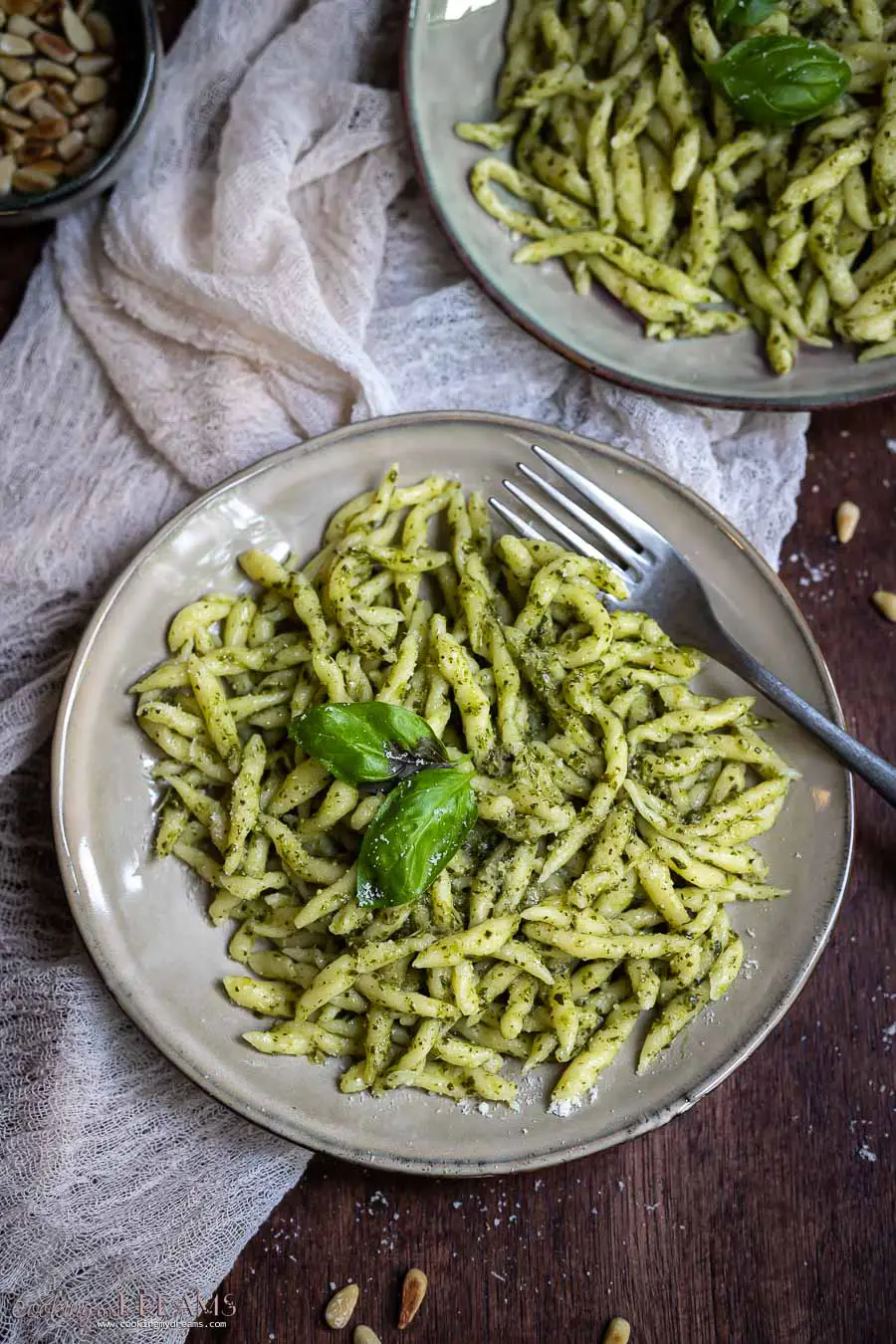
FAQ & Tips
Yes, you can freeze fresh basil pesto in single portions (you can use silicone muffin molds or ice cube molds) or in a closed container, for up to 3 months. Let it thaw in the fridge or at room temperature. Do not use the oven or the fresh flavor of the basil will be ruined.
You can, but I don't recommend it. Adding direct heat to basil pesto will ruin its fresh flavor. It will still be good, but not as good as fresh. But I can testify that cold leftover pasta with pesto is delicious!
You can definitely freeze fresh pasta when still raw. Simply place the pasta on a plate dusted with flour or covered with baking paper and freeze for an hour, then you can move it to a freezer bag without the worry of it sticking into a big lump of pasta. To cook, toss directly into boiling water without thawing first.
Related Recipes you might like
If you like this recipe try also these other recipes with handmade pasta:
If you tried this recipe, please take a moment to rate it and share your thoughts in the comments. Your feedback means a lot to me! ★★★★★
📖 RECIPE
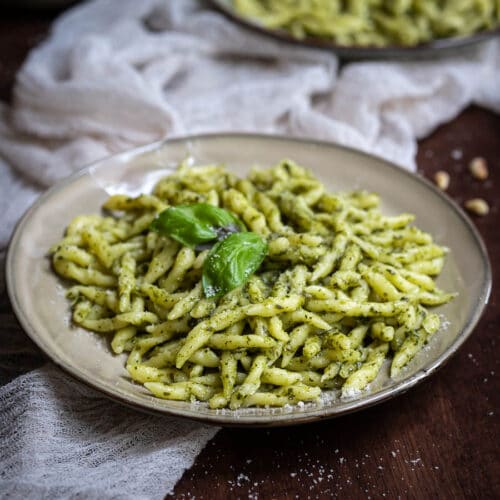
Trofie al Pesto
Ingredients
For the Pasta
- 1 cup Semolina Flour
- a pinch of Salt
- ½ tablespoon Olive Oil
- Water
For the Pesto
- 0.9 oz Basil leaves
- ½ tablespoon Pine nuts
- 1 - 2 tablespoon Parmigiano Reggiano
- ½ Garlic clove
- Extra Virgin Olive Oil
- Salt
Instructions
Make the Pasta
- First make the pasta dough adding the pinch of salt to the semolina flour, then slowly add water until the dough becomes slightly sticky. Add the olive oil and keep kneading the dough. If it's too sticky add some more flour, if it's falling apart, add some more water. When you have a soft smooth ball of dough, cover in plastic foil and set in the fridge to rest for about 10 minutes.
- To make the Trofie, dust a wooden or marble board with semolina flour and knead the pasta until it doesn't stick anymore to the board. Cut it in small chunks of the same thickness then roll them into thin strips then make the Trofie shape by rolling it with your hand or with a butter knife (see post above for more details). Set them aside on a clean towel to rest.
Make the Pesto
- While the pasta rests, you can make the Pesto. If you're using pestle and mortar, start by crushing the garlic, then add the basil and grind until the leaves are completely crushed. Add the pine nuts and cheese and then continue grinding while adding the olive oil little by little until you get the right consistency.
- If you're using a food processor, add all the ingredients together and give it a couple of pulses, then start adding the oil little by little in a thin stream and keep blending until it becomes creamy and lighter in color.
- Adjust with salt and add more cheese or pine nuts to your taste.
- NOTE: You shouldn't blend more than a couple of minutes, otherwise the pesto will heat up and the basil leaves will oxidize.
- Cook the pasta in salted boiling water for 3-4 minutes and serve immediately with the Pesto (the Pesto doesn't need any additional cooking).
Notes
Nutrition
Nutritional information is only an estimate. The accuracy of the nutritional information for any recipe on this site is not guaranteed.
Have you ever made pesto? Let me know in a comment below!


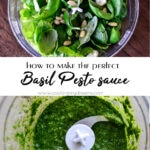
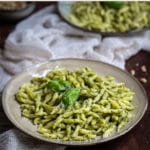
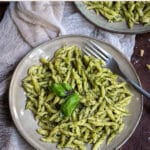
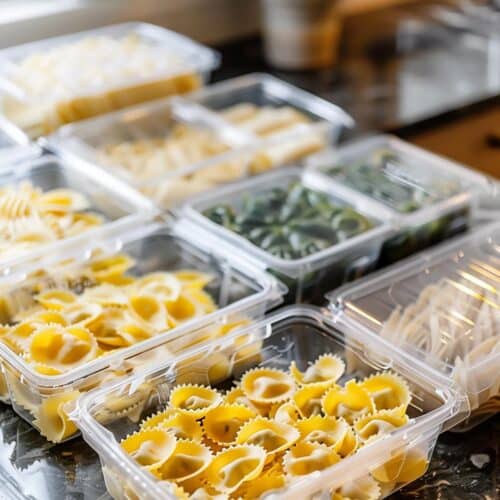
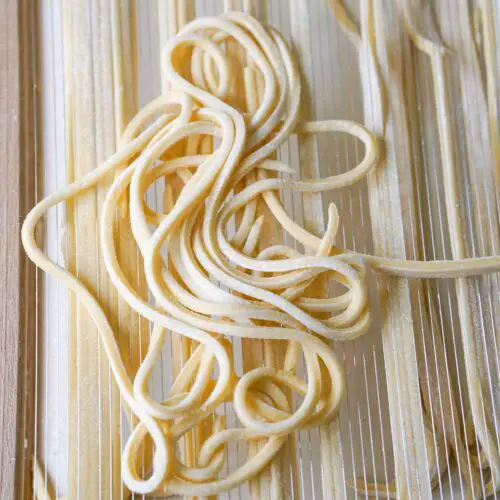
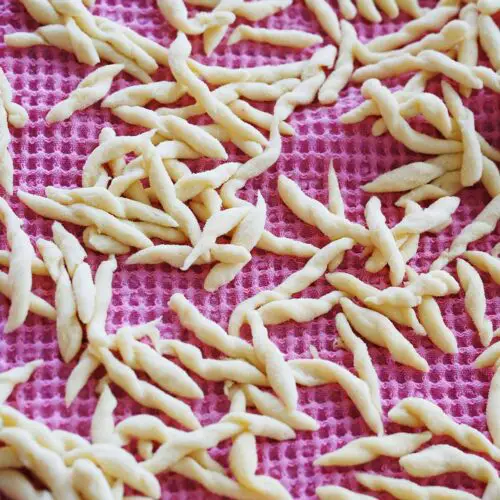
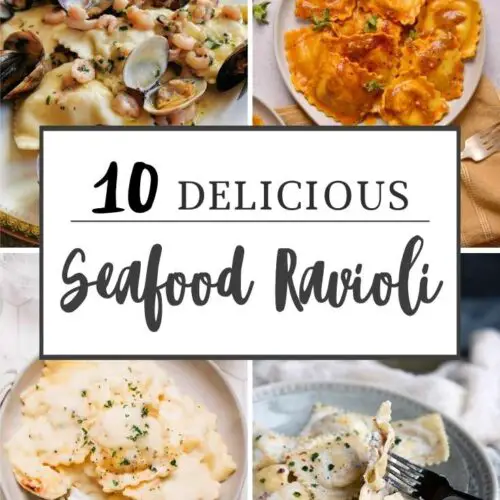
Laura
Oh I am so glad I found your blog! It's nice to know someone else enjoys making their own pasta too. I love it, very therapeutic. I was curious if you have ever made your dough ahead of time, or dried out your pasta shapes to use later? When I make pasta I usually want to make a lot, but am concerned that they won't do well after being refrigerated or frozen. Have you tried this? Thank you!
Also I do often make my own pesto...when my basil plant can spare most of its leaves. 🙂
Jessica - Cooking my Dreams
Hi Laura, thank you! It's so nice to hear about another pasta lover! 🙂 I often made too much pasta and froze it. Just spread it on a lined tray (so they don't stick to each other) and freeze it for a couple of hours. Then you can transfer it in a freezer bag. When you want to cook it, just toss it in boiling water and boil for 3-4 minutes. Enjoy your pasta!